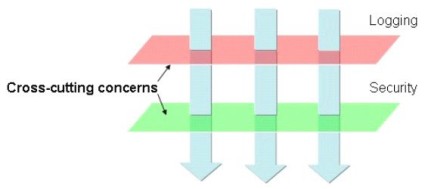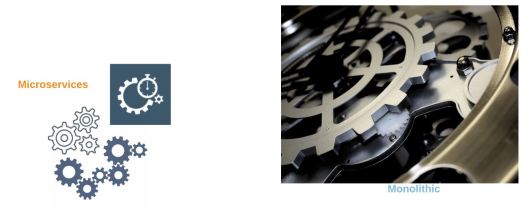I would like to share my professional experience on high performance teams and how to create one.
As you probably know, an effective, cohesive and authentic leader would always aim to build high performing teams that trust solid relationship, share a common purpose, establish clear roles and responsibilities, set-up effective processes, embrace healthy conflicts, follow transparent communications, and importantly deliver results.

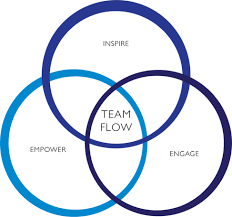
let’s create an abbreviation for high performing team, say ‘HPT’
High Performing Team (HPT) – What are they?
Wikipedia: A high-performance team can be defined as a group of people with specific roles and complementary talents and skills, aligned with and committed to a common purpose, who consistently show high levels of collaboration and innovation, that produce superior results. The high-performance team is regarded as tight-knit, focused on their goal and have supportive processes that will enable any team member to surmount any barriers in achieving the team’s goals.
My definition: An interdependent, stable, role-defined group of individuals who share responsibility, mutual trust, and values, while having a strong leadership and clear focus on a common goal.
A picture is worth a thousand words.
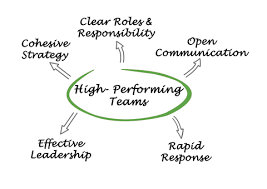
Good to know
Modern agile teams come in different flavors – Squads, Chapters, Tribes, Guilds, 2-Pizza Teams, Self-Organising teams, and many others. Simply, a team is a collection of people working to achieve the same thing, who uphold agreed behaviors and relationships between the members of the team. It is important to understand that having a Spotify style team structure and following agile methodologies doesn’t necessarily mean you have a high performing team. Don’t be surprised, continue reading.
Is your team HPT?
Kewl, it is a hard question to answer as every organisation is unique and people are unique. However, it is very simple to identify HPT by analysing team dynamics and leadership.
Below questions, though not an exhaustive list, might help you make a self-assessment of your ‘team dynamics’ especially culture, relationship and behaviour.
- Do you hear the language of responsibility or the language of blame and excuses?
- Do you share the same value-system? Are these values embedded in the team?
- How much time do you spend working on your peer relations?
- How honest and transparent is your team with each other?
- How biased are your team members?
- How safe is your team environment to have an open conversation about performance and outcome, both positive and negative?
- Do you continuously deliver values? consistently?
Irrespective of whether you are the manager or a direct report to the manager, you must now have recognised the chasm between the expected traits of a HPT and the reality in your team. While acknowledging that it is challenging to achieve the ideal HPT state, every team should endeavor to narrow the gap.

How to build HPT?
Now that we know WHAT a HPT should look like, the next question is HOW to make your team high-performing.
It is a fundamental principle that you can’t buy HPT, you need to build it.
Forming a HPT takes time and effort, but once formed they start yielding results and further set the framework for a broader culture of the organisation thereby becoming an indispensable asset.
For starters, here are some recommendations on how to build your HPT.
First, create a stable team:
You should take your time and carefully select the team members. While it is essential to have diversity in the team with people having varied ideas and robust discussions, it is also vital that you weed out any bad apples that undermine the essence of HPT.
Second, focus on team cohesion and trust:
Team with a high degree of cohesion share information without prejudice and thus build trust amongst team members resulting in increased performance.
Caveat: There is a real danger of team becoming over-cohesive and susceptible to groupthink, where, their shared values, beliefs, and assumptions go wrong if unchallenged.
Third, coach the team not individuals:
Prioritise the growth of a team over individual member’s skill development. Importantly, encourage and if necessary emphasise adherence to the team’s agreed behaviors, values and commitment.
Fourth, set effective (measurable) performance goals:
A goal that states “Increase speed of loading time of page X to under 0.5 seconds” sounds much more specific and challenging than plain “increase the page loading speed”.

So far so good, but do you feel something is missing?
Yeah, your guess is right – you need an effective, cohesive and authentic leader to be successful in building HPT.

Hang on a second…
Do you often think about your leaders? Wonder about their leadership style?
Lets deviate a little to address the various leadership styles, and in particular, look at the difference between Vertical and Horizontal leadership.
Snippet from TrustedAdvisor:
Vertical leadership, like command and control, largely goes one way – from top down. But horizontal leadership is best practiced through trust, and trust is bi-lateral; you have to be good at trusting, and at being trusted. “Leader” is not a permanent attribute – it is a mindset/skill-set/role that is played at a given time by a given person, who the next day must play, equally well, the role of follower. The future of leadership is horizontal, not vertical; and the future of horizontal leadership is learning the ways of trust. That means teaching trusting, and being trusted.
I have only touched the tip of the iceberg- horizontal leadership is a very broad topic and it is a discussion for another day but for the interested, I highly encourage that you read more about it.
Horizontal Leadership, the way forward to HPT
Leadership is a journey not a destination, good leaders learn from failures and eventually become great leaders.
A good leader has many notable traits but I believe, the below key traits supersedes and transforms a good leader to a horizontal leader.
Inspire, Empower and Engage
The linchpin for inspiring, empowering and engaging with team members is establishing an effective communication channel. The key to effective communication is the ability to listen well. As a leader, it’s only when you understand how the team prefers to receive communications, you can deliver messages in a way that really resonates. Most important is honest and transparent communication with facts not opinions.
A great leader never let Standards Set Themselves
Standards are ‘defining what good looks like’. One of the biggest mistakes leaders make is not defining clear standards for their team. They either think the standards are so obvious they shouldn’t have to communicate them or assume their people should be as motivated and empowered as they are. Both of these are erroneous presumptions.
Great leaders never lose Focus on the Vision
All leaders within an organisation should take responsibility and have a vision for better performance as compared to where the team is today. This vision could be smaller or of shorter-term than a CEO’s vision, but the key is to have one and keep the team focused on achieving it.
In conclusion, teams that are highly engaged have the potential to become HPTs. I have highlighted some of the key characteristics of HPT in this post. HPTs set a higher benchmark for themselves and they are self-driven, self-organising and continuously work towards excellence.



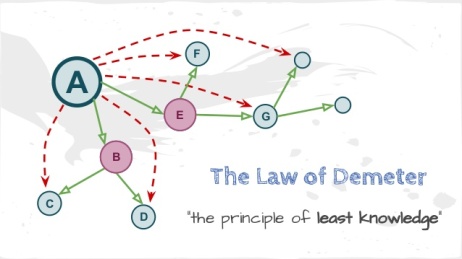
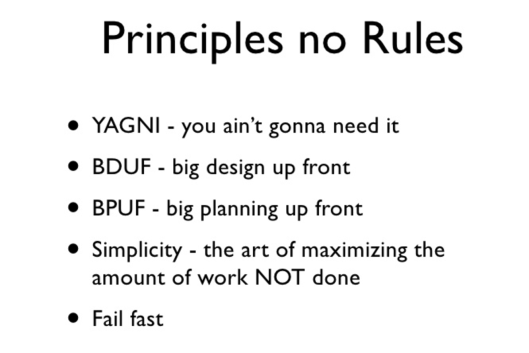 Only design what is necessary – sounds easy but isn’t simple in software architecture within Agile frameworks. In some cases, you may require upfront comprehensive design and testing if the cost of development or a failure in the design is very high. Especially for agile development, you can avoid big design upfront (BDUF). If your application requirements are unclear, or if there is a possibility of the design evolving over time, avoid making a large design effort prematurely. KISS and fail fast is my other favourite principles.
Only design what is necessary – sounds easy but isn’t simple in software architecture within Agile frameworks. In some cases, you may require upfront comprehensive design and testing if the cost of development or a failure in the design is very high. Especially for agile development, you can avoid big design upfront (BDUF). If your application requirements are unclear, or if there is a possibility of the design evolving over time, avoid making a large design effort prematurely. KISS and fail fast is my other favourite principles.